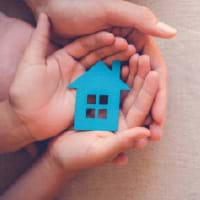Life Guide: Children and Cancer
When people think about cancer, they don't usually associate it with children or teenagers. Cancer is most common in adults. You probably know someone who has had cancer, such as a friend of the family or an older relative. However, kids and teens can also get some types of cancer. Read on to learn more about cancer and how doctors treat it.
What Is Cancer?
"Cancer" is a word that can refer to a lot of different problems. In fact, over 100 different diseases are types of cancer. All cancers have one thing in common: cells that won't stop growing. Cells are the small units that compose every living thing. Cancer begins when cells in the body start to multiply uncontrollably.
Normal cells in the body grow, multiply, and die. Cancer cells, on the other hand, continue to grow and divide forever. Eventually, they combine to make tumors, which are lumps that mess with the body's normal function. In some cases, some of the cells in a tumor break off and move to a different organ or tissue in a process called metastasis. Even though this sounds really scary, many cancers are able to be controlled and treated. A lot of people who have cancer eventually get better.
Livestrong at School
Children's SchoolsKids Get Cancer TooChristina's Rainbows of HopeBlood Counts Information for Kids with Cancer
Cancer Prevention
Doctors don't really know why certain people get cancer. Researchers and scientists are still trying to figure out why cancer occurs in some people and not others. When doctors discover this, they might be able figure out whether cancer is completely preventable. Doctors have a few ideas about what causes cancer, though. The primary causes are behavioral or environmental triggers and genetics.
Doctors believe that some cancer is inherited, which means that the person carries genes that make it more likely for them to get cancer. For example, you might be more likely to get a certain type of cancer if you had a close relative who had that type of cancer too. However, having a relative with cancer doesn't mean that you will definitely get it.
Some environmental and behavioral triggers can change cells in the body and make them become cancerous. For example, smoking cigarettes increases the likelihood of lung cancer. Skin cancer may be caused by too much sun exposure. These triggers affect the body over time, so any cancer that they cause may not show up until the person is an adult. That's one of the reasons that children and teens don't usually get the same cancers as adults do.
Cancer is not contagious, so you can't catch it from anyone who has it or if you had cancer, you would not be able to give it to someone else.
Cancer Prevention Right from the Start
Cancer and Children
Sunwise Skin Cancer Prevention School Program
Melanoma Prevention
SunSmart for Kids
Kids Talk about Healthy Eating
Children with Cancer
Cancer's first sign is called a symptom, which is a signal of something wrong in the body. Because there are many forms of cancer, there are also several different symptoms of cancer. Some of the most common symptoms include:
- unusual bleeding
- frequent infections
- issue with balance or walking
- upset stomach
- blurred vision
- headaches
- lumps or swelling
- extreme exhaustion
You are the only person who knows how your body normally works and what it feels like to be healthy. If you aren't feeling well, you should tell an adult so that the adult can take you to see a doctor. If cancer is found early, it is easier to treat, so you should always check it out if you are worried. If your doctor suspects cancer, they will order certain tests to determine if you have it, such as MRIs, X-rays, and blood tests. MRIs and X-rays look for tumors, while blood tests look at the blood to find possible problems.
Doctors who treat cancer are called "oncologists." If tests show possible problems, doctors will use a biopsy to check for cancer. During the biopsy, the doctor will remove a small sample of tissue. He will then look for cancer cells in the tissue.
Cancer in Children
Children with Cancer
Cancer Kids
The National Children's Cancer Society
Children's Cancer Association
Candlelighters for Children with Cancer
Nutrition for Children with Cancer
Kids Cancer Network
Friends of Kids with Cancer
Why Me and Sherry's House
Coping with Cancer (Friends and Family)
Most types of cancer can be treated. Cancers kids and teens get are especially treatable. The percentage of people who survive cancer increases each year because new treatments are continually created. The three most common treatments for cancer are: radiation, chemotherapy, and surgery. Each patient's cancer is different, so doctors design treatment plans specifically for individual people. A person with cancer may undergo a combination of treatments or only one.
When people get radiation treatment, they are treated by radiation oncologists, who are doctors trained to kill cancer cells with radiation. Radiotherapy machines use high-energy electrons to kill cells in the part of the body affected by the cancer. After the person has several doses of radiation, tumors get smaller or disappear. Radiation therapy doesn't hurt, but some patients may get diarrhea, vomiting, nausea, or fatigue.
Chemotherapy is the treatment of cancer with medication. Some types of cancer respond well to chemotherapy. A person taking chemotherapy sometimes experiences hair loss, fatigue, and nausea. The reason for these side effects is that the chemotherapy also destroys healthy cells when it fights the cancer cells. When chemotherapy is over, the healthy cells will grow again and side effects will go away.
Surgery involves the removal of cancerous tissues. Surgeries to remove cancer are complex or simple, depending on the location of the cancer. Sometimes patients can go home right after surgery, but they may have to stay in the hospital for a few days. During surgery, a doctor cuts out cancerous tissue and a little bit of the healthy tissue that surrounds it. Doctors cut out the healthy tissue to make sure that they get all of the cancer.
Camps and Retreats for Families and Children Touched by Cancer
Straight Talk to Kids
Talking to Kids about Cancer
My Friend Has Cancer. How Can I Help?
Do's and Don'ts
What Can We Do?
Dealing with cancer treatments disrupts the patient's life. People who have cancer need support from a lot of different sources in order to take care of everything else in their lives. For example, kids and teens with cancer sometimes need help from a tutor so they can get schoolwork done. Adults may need help with their jobs or housework. People with cancer also talk to counselors and therapists to get help with the emotional aspects of the condition.
Doctors sometimes talk about a person's prognosis, which is the estimate of how well the treatment will work. After treatment with chemotherapy, radiation, or surgery, doctors run tests to check the cancer. If the doctor doesn't find any cancer, then the patient is in remission. Remission is the best possible result of cancer treatment. Sometimes, patients may need additional treatment later to keep cancer cells from growing again.
Everyone in a society, regardless if he or she knows someone or has been affected by cancer can help the fight to prevent and cure cancer. There are many fundraisers and charity organizations that work towards this cause. The most important ways to help are to through spreading knowledge, donation of time or money, or efforts to raise money through fundraising. Anyone can help and there are lots of options of ways to help. Don't wait until you or someone you know has been diagnosed.
Cookies for Kids Cancer
Choose Hope
Kids Konnected
CureSearch Walk for Children's Cancer
Help Kids Fight Cancer





